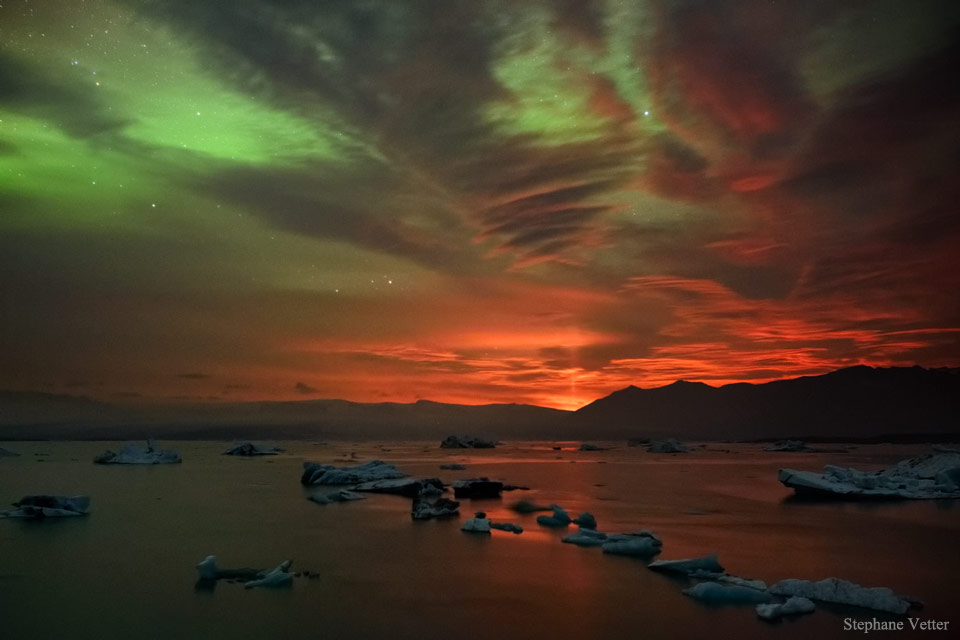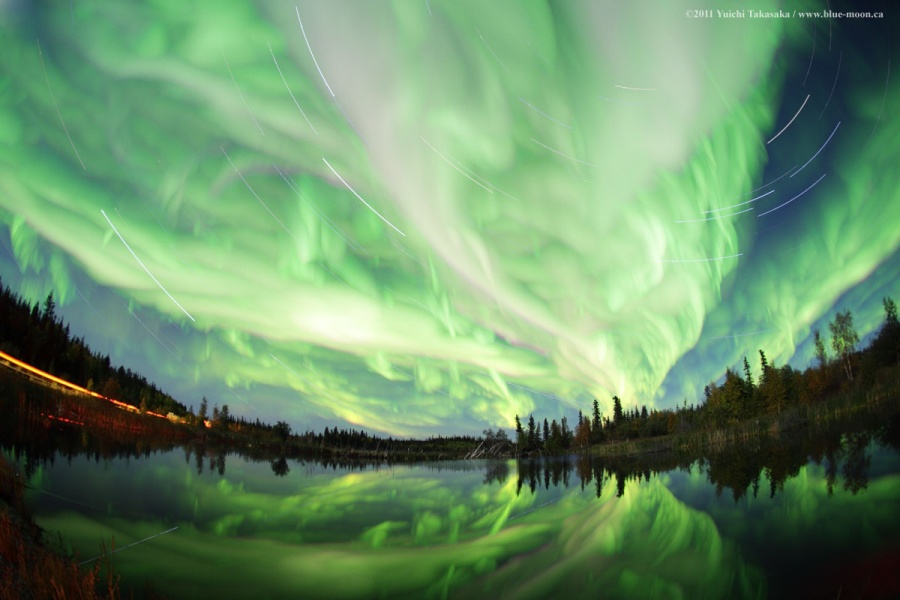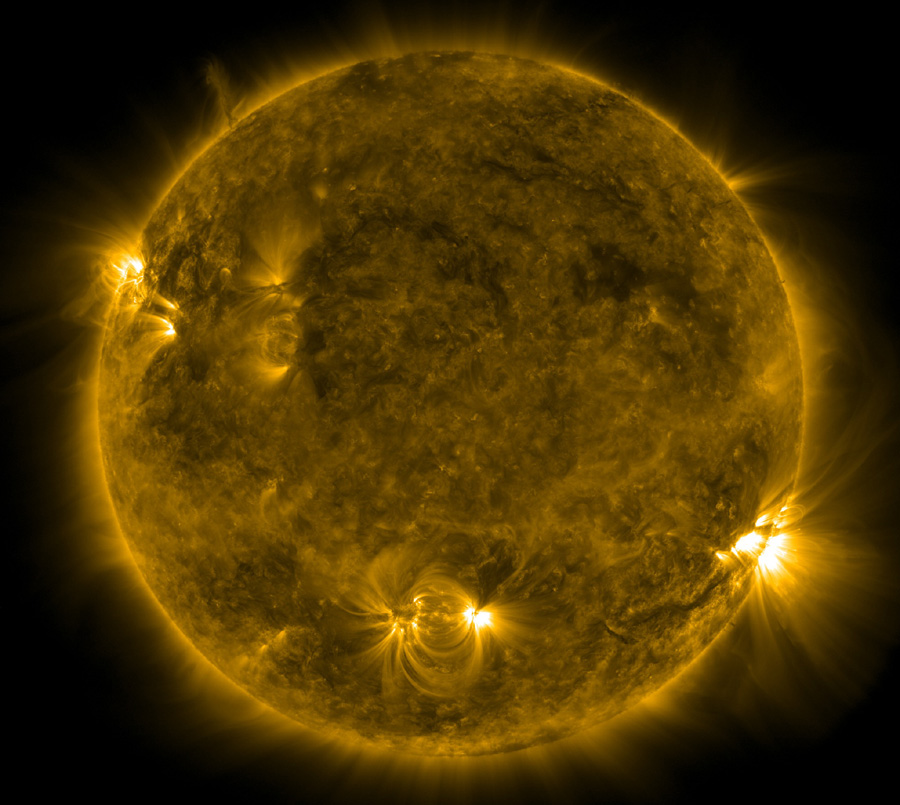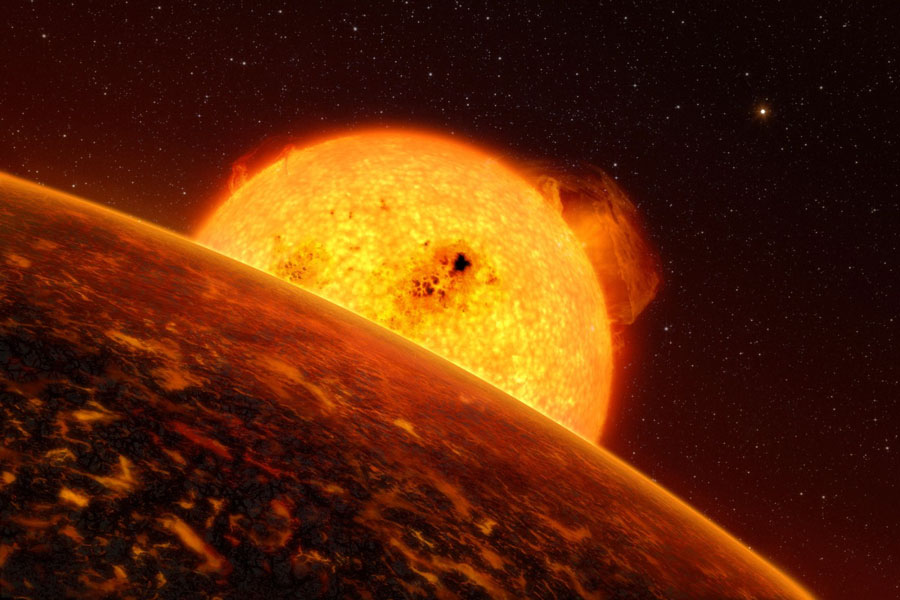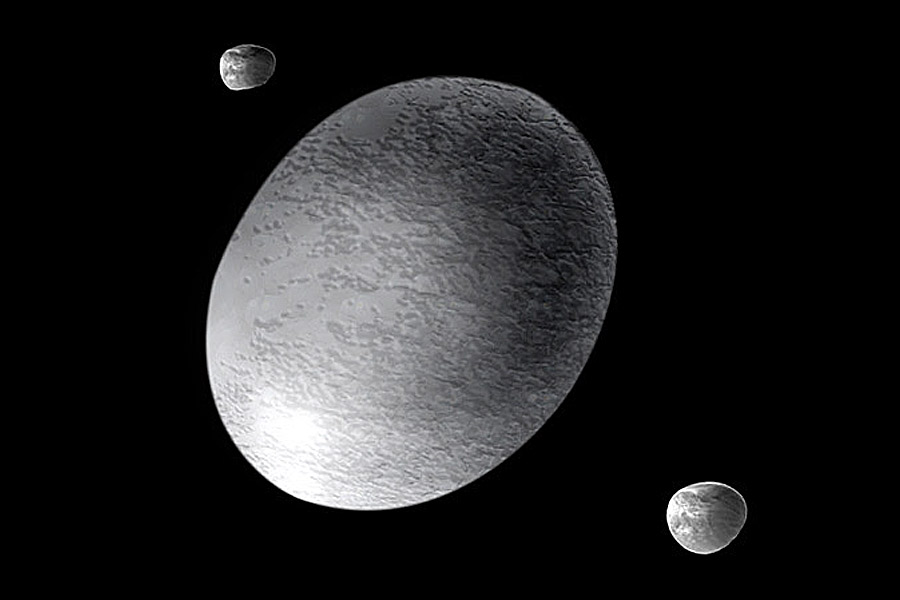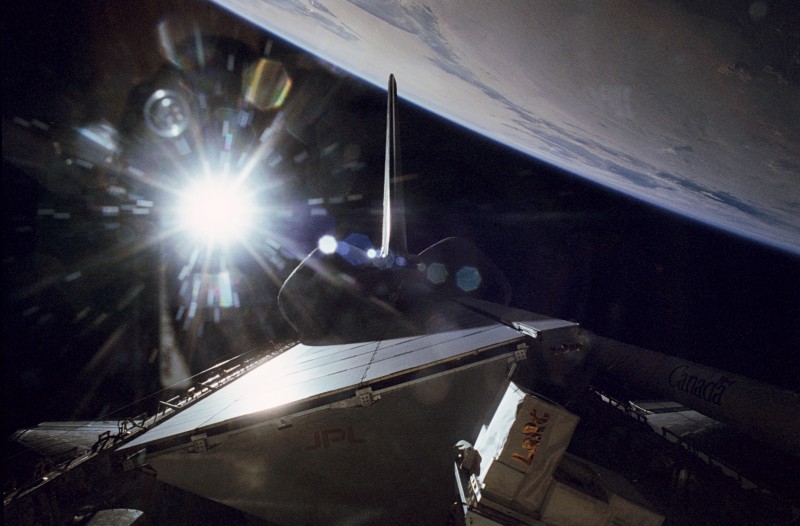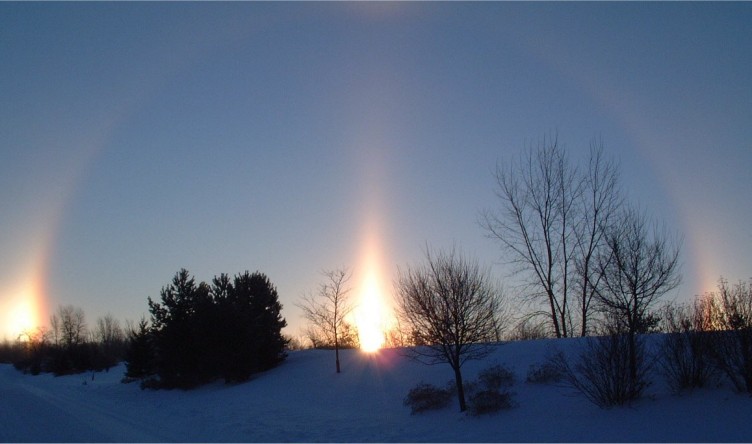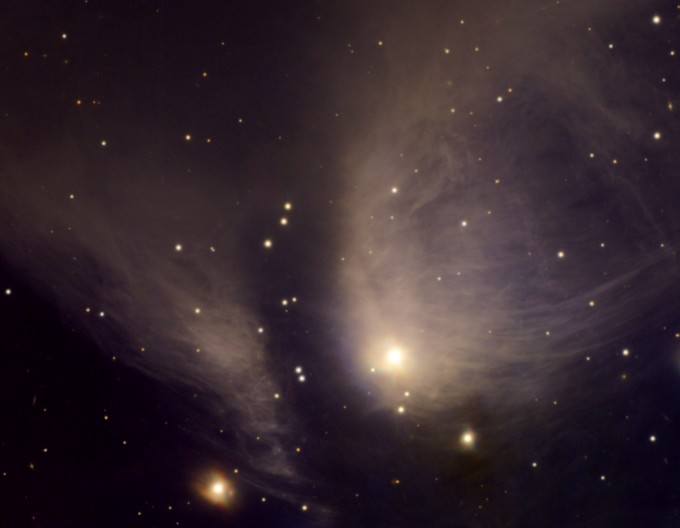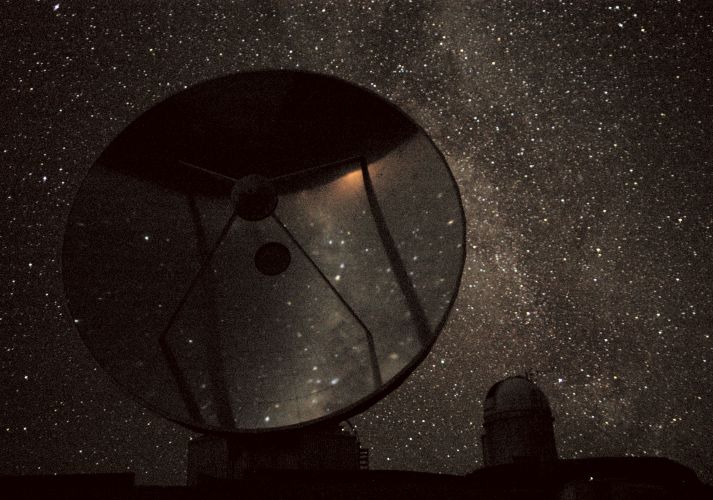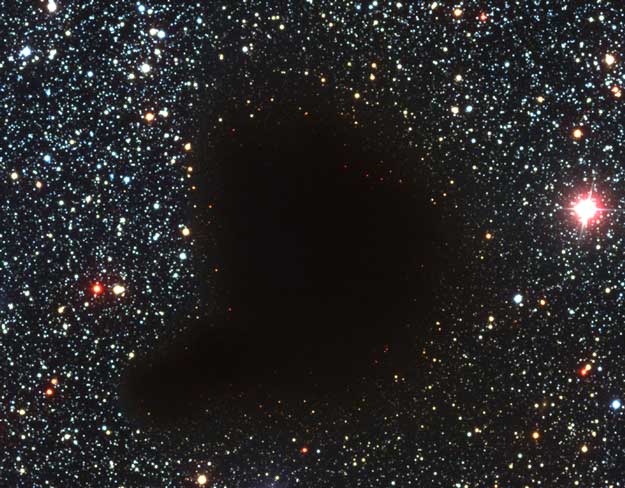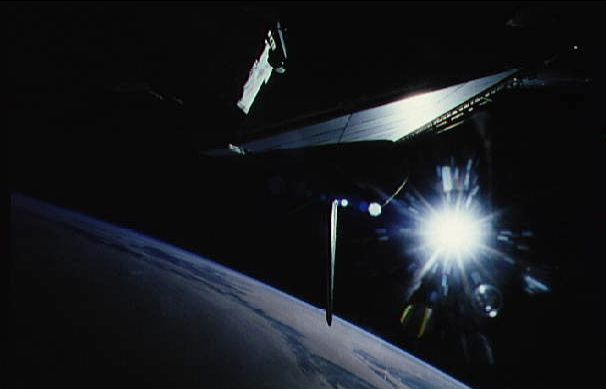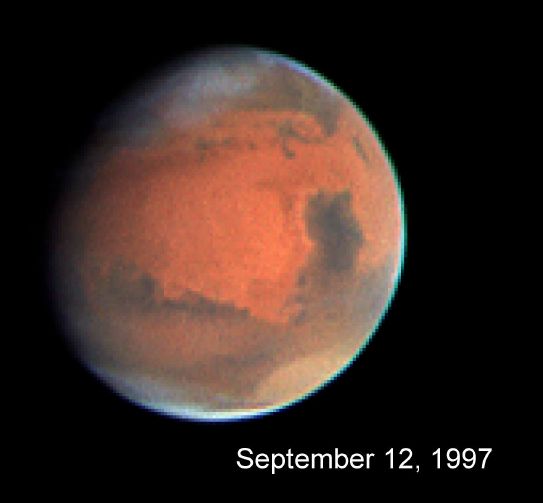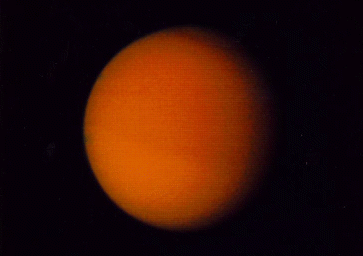| << Previous | Index | Next >> |
2015 Does the Sun return to the same spot on the sky every day? No. A better and more visual answer to that question is an analemma, a composite image taken from the same spot at the same time over the course of a year. The featured weekly analemma was taken despite cold temperatures and high winds near the Concordia Station in Antarctica. The position of the Sun at 4 pm was captured on multiple days in the digital composite image, believed to be the first analemma constructed from Antarctica. The reason the image only shows the Sun from September to March is because the Sun was below the horizon for much of the rest of the year. In fact, today being an equinox, the Sun rises today at the South Pole after a six month absence and won't set again until the next equinox in March, baring large atmospheric refraction effects. Conversely, today the Sun sets at the North Pole after half a year of continuous daylight. For all of the Earth in between, though, the equinox means that today will have a nighttime and daytime that are both 12 hours long.
2014 That's no sunset. And that thin red line just above it -- that's not a sun pillar. The red glow on the horizon originates from a volcanic eruption, and the red line is the eruption's reflection from fluttering atmospheric ice crystals. This unusual volcanic light pillar was captured over Iceland earlier this month. The featured scene looks north from Jökulsárlón toward the erupting volcano Bárðarbunga in the Holuhraun lava field. Even the foreground sky is picturesque, with textured grey clouds in the lower atmosphere, shimmering green aurora in the upper atmosphere, and bright stars far in the distance. Although the last eruption from Holuhraun was in 1797, the present volcanic activity continues.
2013 South of Antares, in the tail of the nebula-rich constellation Scorpius, lies emission nebula IC 4628. Nearby hot, massive stars, millions of years young, radiate the nebula with invisible ultraviolet light, stripping electrons from atoms. The electrons eventually recombine with the atoms to produce the visible nebular glow, dominated by the red emission of hydrogen. At an estimated distance of 6,000 light-years, the region shown is about 250 light-years across, spanning an area equivalent to four full moons on the sky. The nebula is also cataloged as Gum 56 for Australian astronomer Colin Stanley Gum, but seafood-loving astronomers might know this cosmic cloud as The Prawn Nebula.
2012 Yesterday was an equinox, a date when day and night are equal. Today, and every day until the next equinox, the night will be longer than the day in Earth's northern hemisphere, and the day will be longer than the night in Earth's southern hemisphere. An equinox occurs midway between the two solstices, when the days and nights are the least equal. The picture is a composite of hourly images taken of the Sun above Bursa, Turkey on key days from solstice to equinox to solstice. The bottom Sun band was taken during the winter solstice in 2007 December, when the Sun could not rise very high in the sky nor stay above the horizon very long. This lack of Sun caused winter. The top Sun band was taken during the summer solstice in 2008 June, when the Sun rose highest in the sky and stayed above the horizon for more than 12 hours. This abundance of Sun caused summer. The middle band was taken during the Vernal Equinox in 2008 March, but it is the same sun band that Earthlings saw yesterday, the day of the Autumnal Equinox.
2011 September's equinox arrives today at 0905 UT. As the Sun crosses the celestial equator heading south, spring begins in the southern hemisphere and autumn in the north. And though the seasonal connection is still puzzling, both spring and autumn bring an increase in geomagnetic storms. So as northern nights grow longer, the equinox also heralds the arrival of a good season for viewing aurora. Recorded earlier this month, these curtains of September's shimmering green light sprawl across a gorgeous night skyscape. In the foreground lies Hidden Lake Territorial Park near Yellowknife, Northwest Territories, Canada. Calm water reflects the aurora, with bright star trails peering through the mesmerizing sky glow. Of course, shining at altitudes of 100 kilometers or so, planet Earth's auroras are visible from space.
2010 Today, the Sun crosses the celestial equator heading south at 03:09 Universal Time. Known as an equinox, this astronomical event marks the first day of autumn in the northern hemisphere and spring in the south. Equinox means equal night. With the Sun on the celestial equator, Earth dwellers will experience nearly 12 hours of daylight and 12 hours of darkness. Of course, in the north the days continue to grow shorter, the Sun marching lower in the sky as winter approaches. To celebrate the equinox, consider this view of the Sun in extreme ultraviolet light from the Sun staring Solar Dynamics Observatory. Recorded yesterday, the false-color image shows emission from highly ionized iron atoms. Loops and arcs trace the glowing plasma suspended in magnetic fields above solar active regions.
2009 How similar is exoplanet CoRoT-7b to Earth? The newly discovered extra-solar planet is the closest physical match yet, with a mass about five Earths and a radius of about 1.7 Earths. Also, the home star to CoRoT-7b, although 500 light years distant, is very similar to our Sun. Unfortunately, the similarities likely end there, as CoRoT-7b orbits its home star well inside the orbit of Mercury, making its year last only 20 hours, and making its peak temperature much hotter than humans might find comfortable. CoRoT-7b was discovered in February by noting a predictable slight decrease in the brightness of its parent star. Pictured above, an artist's depiction shows how CoRoT-7b might appear in front of its parent star. The composition of CoRoT-7b remains unknown, but given its size and mass, it cannot be a gas giant like Jupiter, and is very likely composed predominantly of rock. Future observations will likely narrow the composition of one of the first known rocky planets discovered outside of our Solar System.
2008 One of the strangest objects in the outer Solar System was classified as a dwarf planet last week and given the name Haumea. This designation makes Haumea the fifth designated dwarf planet after Pluto, Ceres, Eris, and Makemake. Haumea's smooth but oblong shape make it extremely unusual. Along one direction, Haumea is significantly longer than Pluto, while in another direction Haumea has an extent very similar to Pluto, while in the third direction is much smaller. Haumea's orbit sometimes brings it closer to the Sun than Pluto, but usually Haumea is further away. Illustrated above, an artist visualizes Haumea as a nearly featureless ellipsoid. Quite possibly, however, Haumea has interesting craters and surface features that currently remain unknown. Originally discovered in 2003 and given the temporary designation of 2003 EL61, Haumea was recently renamed by the IAU for a Hawaiian goddess. Haumea has two small moons discovered in 2005, recently renamed Hi'iaka and Namaka for daughters of the goddess.
2007 Today, the Sun crosses the celestial equator heading south at 0951 UT. Known as the equinox, the astronomical event marks the first day of autumn in the northern hemisphere and spring in the south. Equinox means equal night and with the Sun on the celestial equator, Earth dwellers will experience nearly 12 hours of daylight and 12 hours of darkness. Of course, for those in the south, the days will grow longer with the Sun marching higher in the sky as summer approaches. A few weeks after the September Equinox of 1994, the Crew of the shuttle orbiter Endeavour recorded this image of the Sun poised above the Earth's limb. Glare illuminates Endeavour's vertical tail (pointing toward the Earth) along with radar equipment in the payload bay.
2006 Today, the Sun rises due east at the Equinox, a geocentric astronomical event that occurs twice a year. To celebrate, consider this view of the rising Sun and a lovely set of ice halos recorded on a cold winter morning near Green Bay, Wisconsin, USA, planet Earth. Produced by sunlight shining through common atmospheric ice crystals with hexagonal cross-sections, such halos can actually be seen more often than rainbows. The remarkable sunrise picture captures a beautiful assortment of the types most frequently seen, including a sun pillar (center) just above the rising Sun surrounded by a 22 degree halo arc. Completing a triple sunrise illusion, sundogs appear at the far left and far right edges of the 22 degree arc. An upper tangent arc is also just visible at the very top of the view.
2005 A star emerges from its natal cloud of gas and dust in this tantalizing portrait of RY Tauri, a small stellar nursery at the edge of the Taurus molecular cloud, a mere 450 light-years away. Illuminating a region that spans about 2/3 of a light-year, the youthful, central star is large, cool, and known to vary in brightness. Still collapsing, in a few million years the star's winds will likely clear out the gas and dust clouds, as it settles down to become a steady main sequence star like the Sun. What remains could well include a planetary system. The image data for RY Tauri is from the Gemini Observatory, on Mauna Kea, Hawaii -- based on observations proposed by the Astronomy Club of Dorval, Quebec.
2004 On clear, moonless nights, the stars still come out with a vengance above the high-altitude La Silla astronomical observatory. Taking advantage of a recent visit to this first European Southern Observatory (ESO) site constructed on a mountain top in Chile, ESO software engineer Nico Housen recorded this stunning sky view. Difficult to see from light polluted areas, faint stars and dark dust clouds along the plane of our Milky Way Galaxy arc across the gorgeous photo. In the foreground lies the highly polished 15-meter diameter dish antenna of the Swedish-ESO Submillimeter Telescope (now decommissioned). Beyond it, silhouetted by starlight, is the dome of one of La Silla's large optical instruments, a 3.6 meter telescope. Dramatically reflected in the focusing, mirror-like surface of the dish, the vista behind the photographer appears inverted, with the dark horizon hanging above the Milky Way and the starry night.
2003 Today is the autumnal equinox -- should eggs be able to stand on end? This long-standing myth loses much of its mystique after a demonstration that eggs can be made to stand on end during any day of the year. Pictured above, Dr. Phil Plait (Sonoma St. U.) acting as the Bad Astronomer balanced three raw eggs on end in late October 1998. Later, more modestly, his wife balanced five more. The little-appreciated fact that most eggshells have small bumps on them makes this seemingly impossible task achievable. Although, during an equinox, every place on Earth experiences an equal length day and night (12 hours each), this fact has no practical effect on egg stability.
2002 Have you ever seen the band of our Milky Way Galaxy? Chances are you have never seen it like this -- nor could you. In a clear sky from a dark location at the right time, a faint band of light is visible across the sky. This band is the disk of our spiral galaxy. Since we are inside this disk, the band appears to encircle the Earth. The above spectacular picture is a bit of a digital trick, though. A first shot was taken in July 2000 with the camera counter-rotating from the Earth so that the stars appear fixed. This allowed a long exposure from which a great amount of detail could emerge from the background star field. Later, after moonrise, a much shorter image was taken from the same location catching details of the French Alps near Mount Blanc, the highest mountain in Western Europe. Reflections in the water were later enhanced digitally.
2001 Where did all the stars go? What used to be considered a hole in the sky is now known to astronomers as a dark molecular cloud. Here, a high concentration of dust and molecular gas absorb practically all the visible light emitted from background stars. The eerily dark surroundings help make the interiors of molecular clouds some of the coldest and most isolated places in the universe. One of the most notable of these dark absorption nebulae is a cloud toward the constellation Ophiuchus known as Barnard 68, pictured above. That no stars are visible in the center indicates that Barnard 68 is relatively nearby, with measurements placing it about 500 light-years away and half a light-year across. It is not known exactly how molecular clouds like Barnard 68 form, but it is known that these clouds are themselves likely places for new stars to form.
2000 Yesterday the Sun crossed the celestial equator heading south, marking the Equinox -- the first day of Autumn in the northern hemisphere and Spring in the south. Equinox means equal night and with the Sun on the celestial equator, Earthlings will experience 12 hours of daylight and 12 hours of darkness. For those in the northern hemisphere, the days will continue to grow shorter with the Sun marching lower in the sky as winter approaches. A few weeks after the Autumnal Equinox of 1994, the Crew of the Shuttle Endeavor recorded this image of the Sun poised above the Earth's limb. Glare illuminates Endeavor's vertical tail (pointing toward the Earth) along with radar equipment in the payload bay.
1999 Today, the Sun crosses the celestial equator and seasons change from Summer to Fall in the north and Winter to Spring in the southern hemisphere. Defined by the Sun's position in sky the event is known as an equinox - the length of daylight is equal to the length of night. Just last week the active Sun produced the dramatic eruptive prominence seen in this extreme ultraviolet picture from the space-based SOHO observatory. The hot plasma is lofted above the solar surface by twisting magnetic fields. How big is the prominence? Click on the image to view the larger full-sun picture. At the same scale, planet Earth would likely still appear smaller than your cursor.
1998 As the Sun heads South, crossing the celestial equator today at 1:37 a.m. Eastern Time, Autumn begins for Earth's Northern Hemisphere. This Autumnal Equinox finds an increasingly active Sun steadily approaching a solar cycle maximum expected around the year 2003. The solar activity cycle is driven by a periodic winding up of the Sun's internal magnetic field. This colorized picture is a mosaic of recent ultraviolet images from the orbiting TRACE satellite sensitive to light emitted by highly charged iron atoms. Growing in number, the intricate structures visible are the Sun's hot active regions with temperatures over a million degrees Fahrenheit and their associated magnetic loops.
1997 Today is the first day of Autumn in the Northern Hemisphere of Planet Earth. The Autumnal Equinox occured yesterday at 7:56 pm EDT as the Sun crossed the celestial equator from North to South. Mars has seasons too and for the same reason that Earth does -- like Earth, Mars' axis of rotation is tilted with respect to the plane of its orbit around the sun. Eleven days ago Autumn also came to Mars' Northern Hemisphere and the Hubble Space Telescope recorded this image of the red planet to look for seasonal changes in the Martian weather. Clouds appear to cover the north polar regions while a dust storm rages in the south. The subject of weather on Mars is important to the just arrived Mars Global Surveyor spacecraft as it uses the innovative technique of aerobraking to establish a suitable mapping orbit around Mars.
1996 If Venus weren't so cloudy it would be more similar to Earth. This picture by the Galileo spacecraft shows just how cloudy Venus is. Venus is very similar to Earth in size and mass - and so is sometimes referred to as Earth's sister planet - but Venus has a quite different climate. Venus' thick clouds and closeness to the Sun (only Mercury is closer) make it the hottest planet - much hotter than the Earth. Humans could not survive there, and no life of any sort has ever been found. When Venus is visible it is usually the brightest object in the sky after the Sun and the Moon. More than 20 spacecraft have visited Venus including Venera 9, which landed on the surface, and Magellan, which used radar to peer through the clouds and make a map of the surface. This visible light picture of Venus was taken by the Galileo spacecraft now in orbit around Jupiter. Many things about Venus remain unknown, including the cause of mysterious bursts of radio waves.
1995 The largest moon of Saturn is a rare wonder. Titan is the only one of Saturn's moons with an atmosphere, and one of only two moons in the Solar System with this distinction (Neptune's Triton is the other). Titan's thick cloudy atmosphere is mostly nitrogen, like Earth's, but contains much higher percentages of "smog-like" chemicals such as methane and ethane. The smog may be so thick that it actually rains "gasoline-like" liquids. The organic nature of some of the chemicals found in Titan's atmosphere cause some to speculate that Titan may harbor life! Because of its thick cloud cover, however, Titan's actual surface properties remain mysterious. Voyager 1 flew by in 1980 taking the above picture, and recently much has been learned from Hubble Space Telescope observations. The Cassini mission currently scheduled for launch in 1997 will map Titan's surface, helping to solve some of its mysteries.
| << Previous | Index | Next >> |

